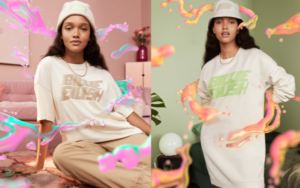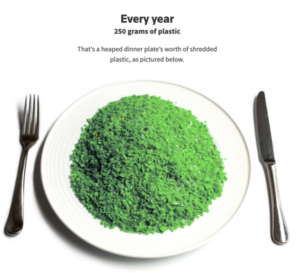We’re going to start the first newsletter of the decade by looking at the past. One of our teammates was recently educating me about how nylon was invented in the 1930s at the chemical giant DuPont. After some furious wikipedia-ing, it became clear that the history of nylon is an important one in the context of today’s sustainability discussion.
Nylon – the world’s first synthetic fiber – was discovered by a DuPont scientist named Wallace Carothers over an 11 year period, from 1927-1938. It was announced to the world in 1938, and was a runaway success, partly thanks to a clever marketing strategy where DuPont heavily promoted the fiber before the product was available.
They would loudly proclaim nylon was:
the “first man-made organic textile fiber” which was derived from “coal, water and air” and promised to be “as strong as steel, as fine as the spider’s web”.
During World War 2, all nylon production was diverted towards military use like parachutes. At the end of the war, when the material was once again used to launch nylon stockings, demand was so strong that fights broke out at counters across the U.S. The phenomenon was one profound enough that they were dubbed the Nylon Riots (though from all the images I found, it looks more like groups of women simply lined up for stockings)!
But regarding sustainability, the marketing lingo around nylon reminds us just how much consumer demands can change. When nylon was first marketed as a science-driven, man-made material, there was a backlash. To combat this, DuPont began shifting the conversation away from the synthetic angle, and began leveraging the material’s composition of “coal, air and water” as an all natural fabric. Check out the old-timey 1940s commercial below, where the narrator incredibly proclaims:
Everything this woman is wearing is made of nylon, the fabric of tomorrow.
All derived from one thing: coal.
Do I hear someone say how about you put on a little more coal, my dear?
The entire history is a fascinating one, and this Scientific American piece does it justice. When it comes to sustainability, this reminds us just how much the conversation around what consumers want can change. What about the way we make things and what consumers want will soon seem antiquated as selling a woman on the idea of covering herself in coal?
Happy Reading,
Ranjan
WHAT WE’RE READING
The Top Sustainability Stories of 2019 – Harvard Business Review
A fantastic roundup of articles and themes from the folks at HBR. If you’re looking to get a broad, smart perspective on the sustainability topic and how climate change is affecting business, spend some time with this one.
Italian Vogue Won’t Publish Photos This Month
In his January 2020 note to readers, Emanuele Farneti, the editor in chief, described what it takes to fill one issue of his magazine.
“One hundred and fifty people involved. About twenty flights and a dozen or so train journeys. Forty cars on standby. Sixty international deliveries. Lights switched on for at least ten hours nonstop, partly powered by gasoline-fuelled generators. Food waste from the catering services. Plastic to wrap the garments. Electricity to recharge phones, cameras …”
The magazine will not use any print photographs and only include illustrations to “show clothes without photographing them.“
It’s an intriguing move that, at the least, makes me wonder if NYC still has any specialty newsstands which carry international magazines where I could get my hands on an edition.
Sustainable Investments Reward Fashion Startups in 2020, Experts Say
A good piece covering the shifting mindset of how venture investors are thinking about sustainability in fashion. Firms covered include Alante Capital, Good Fashion Fund and Noble Profit.
(Note: if you hit the paywall – you can see the full text here.)
Billie Eilish Launches Sustainable Merch Collection With H&M
This collection was getting a lot of headlines as a sustainable one, but even from the H&M press release, it’s difficult to tell exactly what is sustainable about it.
Visualising the amount of microplastic we eat
This is an absolutely horrifying graphical series from Reuters. It visualizes the amount of microplastics (if you’re unfamiliar with the problem read this) we consume in a day, week, month and year.
Yes, that much plastic in the image above enters your body on a yearly basis 😳
Drink more recycled wastewater
If you were troubled by the previous piece, maybe it would make you comfortable with the idea of drinking treated wastewater; something that would potentially bring great environmental benefit.
ONE MORE THING
If you’re ever stressing about the name of one of your creations, just remember the story of the name Nylon (from Wikipedia):
DuPont went through an extensive process to generate names for its new product. In 1940, John W. Eckelberry of DuPont stated that the letters “nyl” were arbitrary and the “on” was copied from the suffixes of other fibers such as cotton and Rayon. A later publication by DuPont explained that the name was originally intended to be “No-Run” (“run” meaning “unravel”), but was modified to avoid making such an unjustified claim. Since the products were not really run-proof, the vowels were swapped to produce “nuron”, which was changed to “nilon” “to make it sound less like a nerve tonic”. For clarity in pronunciation, the “i” was changed to “y.”








